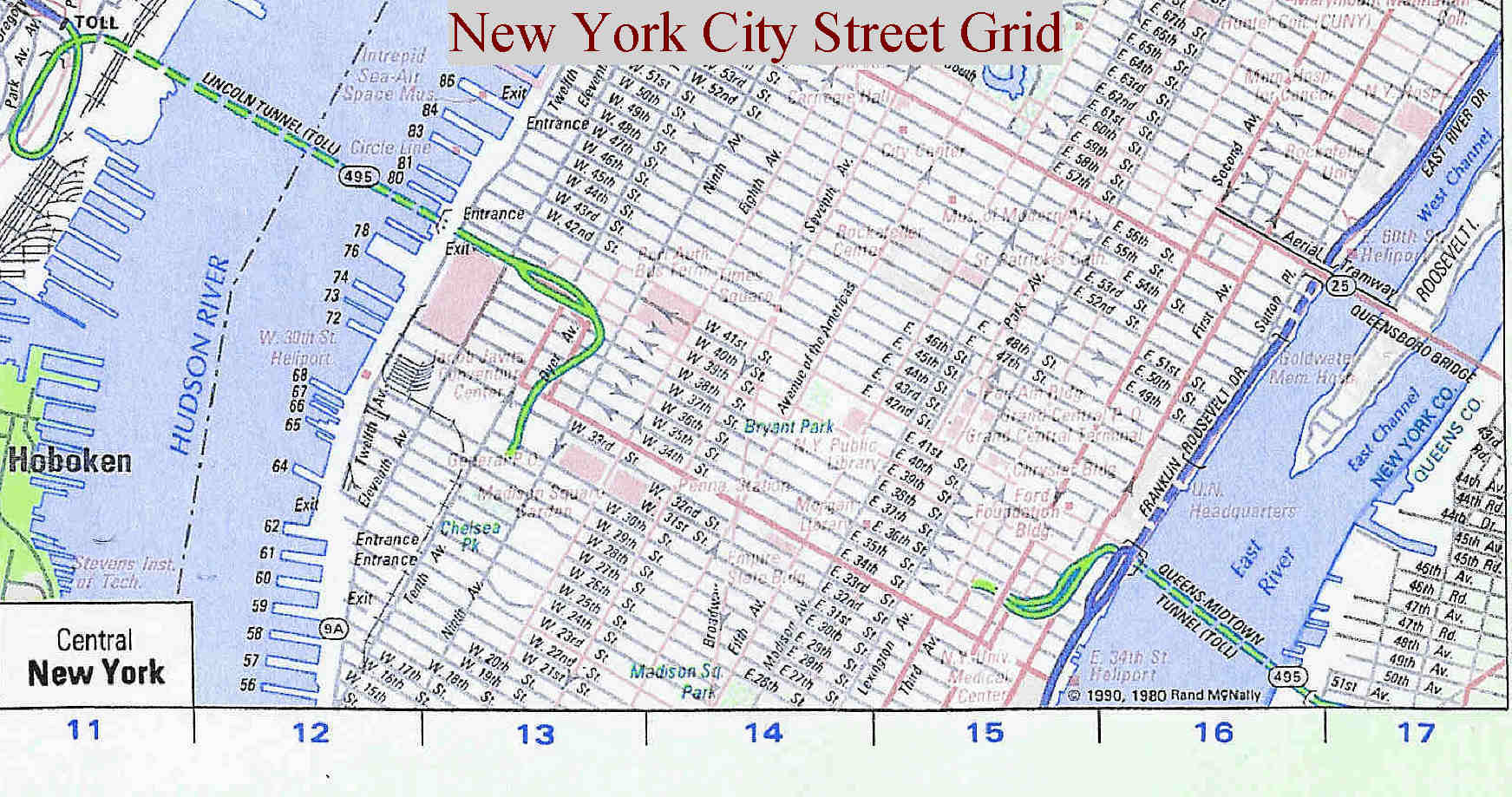
| PLOTTING POINTS ON A GRID |
What's the Point of the Grid?
We usually hear the word "grid" these days when someone is complaining about grid-lock -- a mess of cars and trucks that block the intersections -- so the traffic gets all locked-up and no one can move. We call it GRID-lock, because the streets of our cities and towns are arranged in grids. Let's look at the street grid of New York City:

Notice the numbers 11, 12 to 17 below the image. If we could see the whole map, we'd see the letters A, B, C to Z running down its left edge. The map includes a list of streets, in which each street name is listed with a letter and number beside it. These are the coordinates of that street. They tell us where to look on the map to find it.
If we look up West 47th Street on the list, we'll see the coordinates X 13 - 16. We can't see the X here on the map, but we do see 13 -- so we'll search the map in the column or corridor above 13, until we locate West 47th Street. Because we saw 13 - 16, once we find the street, we'll see that it moves across the city to end at the East River above the number 16.
We use a grid to organize more than our cities and towns. We use them to organize our games too. A football field, and a tennis or volleyball court, has a grid outlined on the grass or painted on the floor. The TV program schedule in the newspaper is a grid that organizes program data by time and channel. Actually, every schedule -- including the one you use everyday at school -- is a grid -- used to organize and present data so that we can find the information we need quite easily. The pixels that create the image on your computer monitor are arranged in a grid -- so is a TV screen.
Points and their Ordered Pairs or Coordinates
To COoperate is to work together. To COexist is to live together. To CO-ORDINATE is to order or number together. The coordinates of a point -- an exact place or spot in space -- tell us exactly where that point is -- and they tell it in an exact order. The first number always tells us how far to move sideways and the second tells us how much to move up.
Coordinates are also called ordered pairs -- a perfect name for a pair of numbers that tell us in what order to move.
On the grid below, we can only move towards the right side and
up from the origin or zero point.

Now get a pencil, an eraser and a note book with graph paper, copy the questions,
do the practice exercise(s), then check your work with the solutions.
If you get stuck, review the examples in the lesson, then try again.
![]()
Practice Exercise
1) Write the ordered pairs for points D, E, and F on the grid above. Remember the commas.
2) On graph paper, draw a 10 × 10 grid, then plot these points:
| A (1, 7) | B (5, 0) | C (10, 9) | D (2, 10) | E (0, 9) | F (8, 6) |
3) Use the map to write the "letter-number" coordinates for these places in California:
| a) El Cajon | b) La Mesa | c) Imperial Beach |

![]()
.
Solutions
1) D is at (4, 3), E is at (6, 7), F is at (0, 8).

3) a) El Cajon is at L-26, b) La Mesa is at M-25 or N-25, c) Imperial Beach is at P-24.
![]()